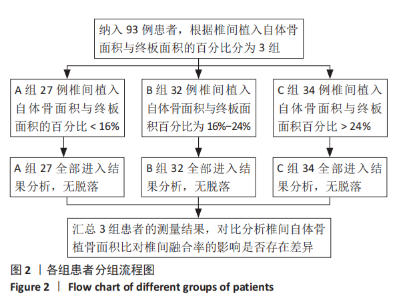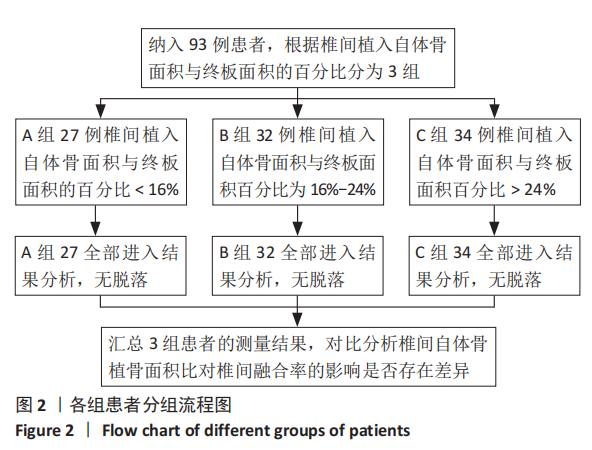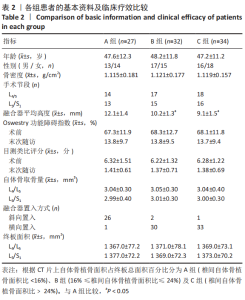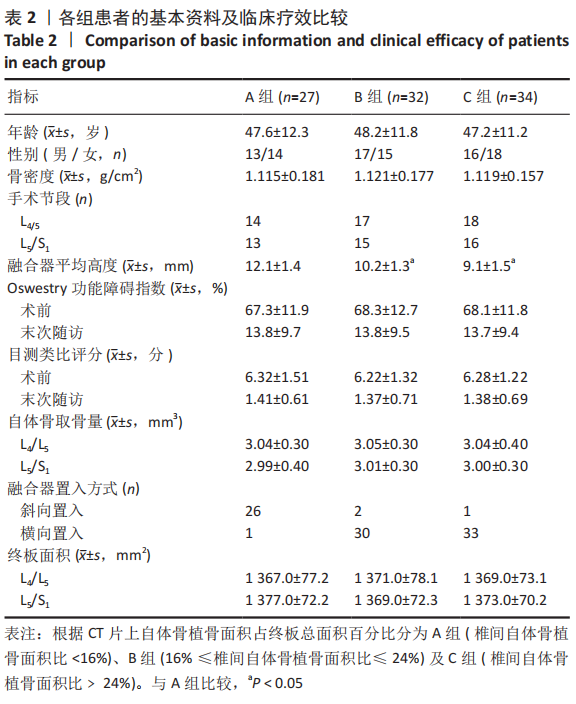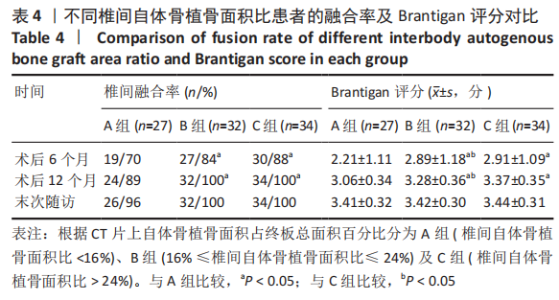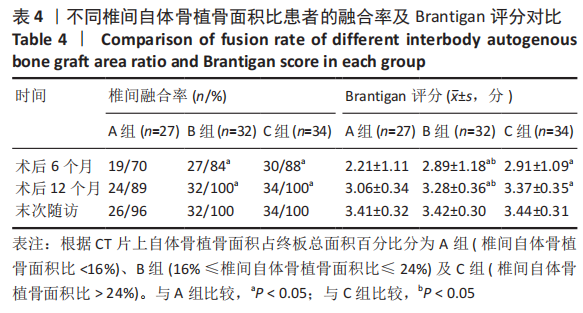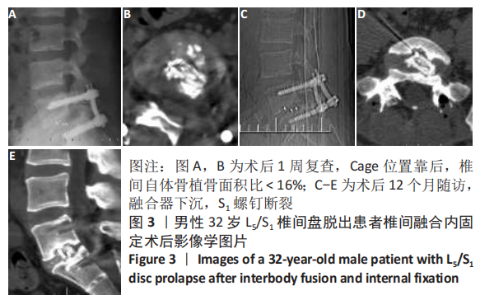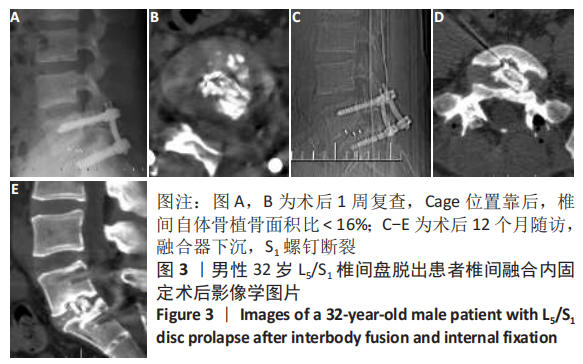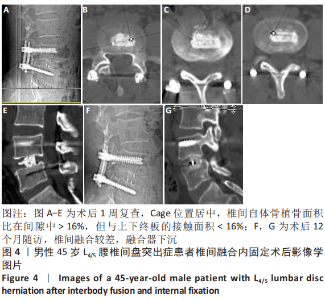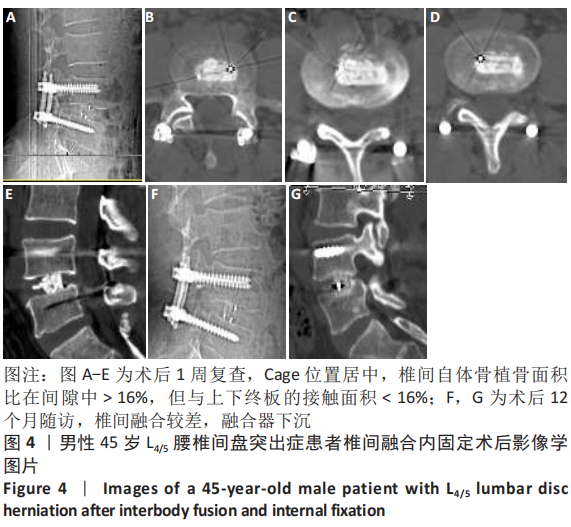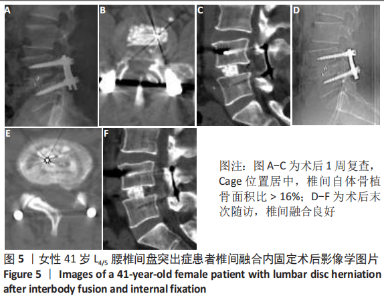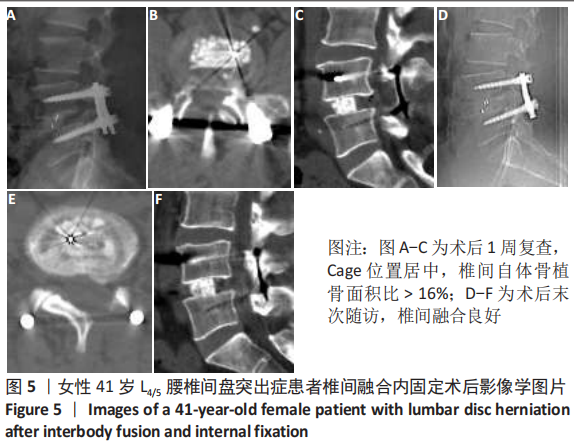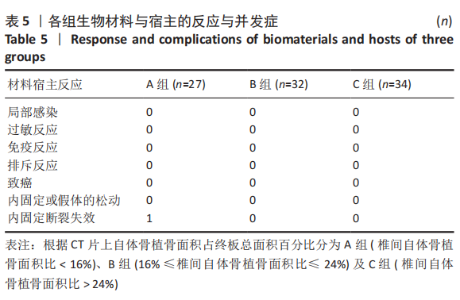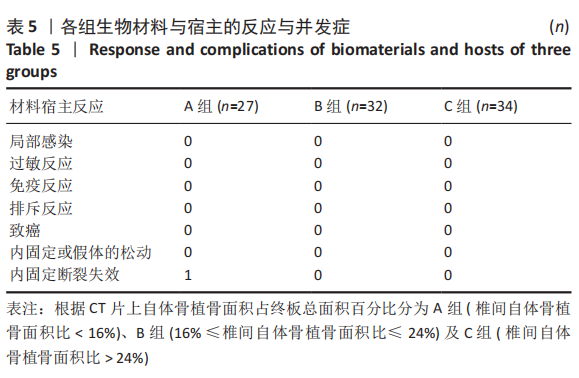[1] YANG EZ, XU JG, LIU XK, et al. An RCT study comparing the clinical and radiological outcomes with the use of PLIF or TLIF after instrumented reduction in adult isthmic spondylolisthesis. Eur Spine J. 2016;25(5): 1587-1594.
[2] 赵宇, 邱贵兴. 后路腰椎椎间融合器的术后移位[J]. 中华骨科杂志, 2004,24(9):566-568.
[3] 李东, 李锦军, 王炳强, 等. 腰椎椎间融合器移位三例报告[J]. 中华骨科杂志,2003,23(9):575-576.
[4] SMITH AJ, ARGINTEANU M, MOORE F, et al. Increased incidence of cage migration and nonunion in instrumented transforaminal lumbar interbody fusion with bioabsorbable cages. J Neurosurg Spine. 2010;13(3):388-393.
[5] BODEN SD. Overview of the biology of lumbar spine fusion and principles for selecting a bone graft substitute. Spine. 2002;27(Supplement):S26.
[6] CLOSKEY RF, PARSONS JR, LEE CK, et al. Mechanics of interbody spinal fusion. Analysis of critical bone graft area. Spine. 1993;18(8):1011-1015.
[7] 郝建学,李雪波,周斐,等.椎间植骨量对腰椎椎间融合内固定术后融合效果的研究[J]. 实用骨科杂志,2016,22(3):205-208.
[8] STEFFEN T, TSANTRIZOS A, AEBI M. Effect of implant design and endplate preparation on the compressive strength of interbody fusion constructs. Spine(Phila Pa 1976). 2000;25(9):1077-1084.
[9] 杨勇,王清,徐双,等.单侧椎板间扩大开窗所获自体骨行腰椎椎间融合的可行性[J].中国脊柱脊髓杂志,2017,27(2):142-148.
[10] BRANTIGAN JW, STEFFEE AD, LEWIS ML, et al. Lumbar interbody fusionusing the Brantigan I/F cage for posterior lumbar interbady fusion and the variable pediele screw placement system: two·year results from a Food and Drug Administration investigational device exemption clinical trial. Spine(Phila Pa 1976). 2000;25(11):1437-1446.
[11] 王荣茂,林翔,石树培,等. 后路椎体间自体髂骨融合与Cage融合治疗下腰椎不稳的比较研究[J]. 中国修复重建外科杂志,2008,22(8):928-932.
[12] LAWRENCE JP, WAKED W, GILLON TJ, et al. rhBMP-2 (ACS and CRM formulations) overcomes pseudarthrosis in a New Zealand white rabbit posterolateral fusion model. Spine. 2007;32(11):1206-1213.
[13] NG VY. Risk of Disease Transmission With Bone Allograft. Orthopedics. 2012;35(8):679-681.
[14] MARKEL DC, GUTHRIE ST, WU B, et al. Characterization of the inflammatory response to four commercial bone graft substitutes using a murine biocompatibility model. J Inflamm Res. 2012;5:13-18.
[15] 杨曦,宋跃明,孔清泉,等. 纳米羟基磷灰石/聚酰胺66椎间融合器植骨融合治疗下腰椎退变性疾病的近期疗效[J].中国修复重建外科杂志, 2012,26(12):1425-1429.
[16] CHEDID MK, TUNDO KM, BLOCK JE, et al. Hybrid biosynthetic autograft extender for use in posterior lumbar interbody fusion: safety and clinical effectiveness. Open Orthop J. 2015;9:218-225.
[17] HUH HY, JI C, RYU KS, et al. Comparison of SpineJet XL and Conventional Instrumentation for Disk Space Preparation in Unilateral Transforaminal Lumbar Interbody Fusion. J Korean Neurosurg Soc.2010;47(5):370-376.
[18] FOGEL GR, TOOHEY JS, NEIDRE A, et al. Is one cage enough in posterior Iumbar interbody fusion: a comparison of unilateral single cage interbody fusion to bilateral cages. Clin Spine Surg. 2007;20(1):60-65.
[19] CHIN KR, REIS MT, REYES PM, et al. Stability of transforaminal lumbar interbody fusion in the setting of retained facets and posterior fixation using transfacet or standard pedicle screws. Spine J. 2015;15(5):1077-1082.
[20] HA KY, LEE JS, KIM KW. Bone graft volumetric changes and clinical outcomes after instrumented lumbar or lumbosacral fusion:a prospective cohort study with a five-year follow-up. Spine. 2009;34(16):1663.
[21] LIN GX, QUILLO-OLVERA J, JO HJ, et al. Minimally Invasive Transforaminal Lumbar Interbody Fusion: A Comparison Study Based on Endplate Subsidence and Cystic Change in Individuals Above and Below the Age of 65. World Neurosurg. 2017;106:174-184.
[22] PARK JJ, HERSHMAN SH, KIM YH. Updates in the use of bone grafts in the lumbar spine. Bull Hosp Jt Dis. 2013;71(1):39-48.
[23] 唐强, 廖烨晖, 唐超, 等. 椎间融合器的置入方式对腰椎融合效果的影响[J]. 中国脊柱脊髓杂志,2019,29(12):1071-1079. |
